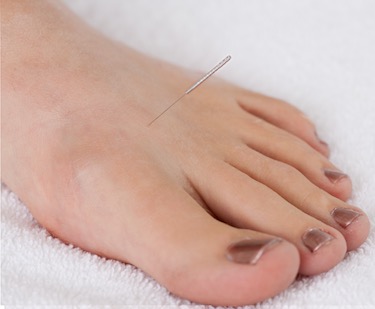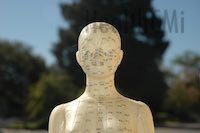Acupuncture successfully lowers blood pressure in patients with hypertension. Researchers conducted a randomized, controlled clinical trial of 120 patients. Groups 1 and 2 received medications but group 1 also received acupuncture in addition to usual care. The group receiving acupuncture had significantly lower blood pressure. In addition, the acupuncture group had significantly less anxiety. 
A related hypertension study had similar findings. A randomized, controlled clinical trial compared two groups. Group 1 received health education and lifestyle intervention. Group 2 received acupuncture in addition to the health education and lifestyle intervention. The hypertension reduced in both groups, however, the acupuncture group had significantly superior patient outcomes.
The researchers used a protocolized acupuncture point prescription to achieve the clinical results. Acupuncture point Baihui (DU20) was threaded towards acupuncture point Qianding (DU21). DU20, located at the vertex of the head, is considered one of the most important acupuncture points in Traditional Chinese Medicine (TCM). Classical indications for using DU20 include the treatment of hypertension.
The hypertension research supports the ancient TCM principles with a modern scientific investigation. According to TCM principles, DU20 is a sea of marrow acupuncture point that clears the senses, calms the spirit, extinguishes liver wind and stabilizes the ascendent yang. In modern terms, this indicates acupuncture at DU20 for the treatment of hypertension, dizziness, headaches, vertigo, tinnitus, nasal congestion, coma, shock, mental disorders and prolapsed organs.
Another group of researchers investigated acupuncture’s anti-hypertensive effects in a laboratory experiment and discovered something very powerful. The researchers gained insight as to how acupuncture lowers blood pressure in cases of hypertension. Acupuncture has the ability to regulate microRNAs, small RNA molecules that regulate gene expression.

The researchers investigated the effects of needling Taichong (LV3) on laboratory rats. They found 222 differently expressed microRNAs (miRNAs) in the medulla of rats receiving acupuncture at LV3. The researchers note, “Our findings have demonstrated significant changes of specific and selective miRNAs in rats when taichong acupoint was stimulated. Our data have revealed the specific miRNA profile changes in response to acupuncture treatment and strongly suggest that a selective panel of miRNAs play an important role in the antihypertensive activity of acupuncture therapy.”
There are numerous investigations finding acupuncture effective in lowering hypertension. Another research team concludes that needling acupuncture point Taixi (KD3) has an “antihypertensive effect for essential hypertension.” To eliminate the placebo effect, a true acupuncture group was compared with a non-acupuncture group and a sham acupuncture group. The data indicates that true acupuncture has a “stable antihypertensive effect.”
References:
"Clinical observations on acupuncture treating the patients of essential hypertension with anxiety state." DOI 10.11656/j.issn.1672-1519.2014.08.04.
"Clinical observations on acupuncture treating the patients of essential hypertension with anxiety state." Wu Xuemei, Li Bing, Bai Hua, Yu Yingmei, Zhang Bo, Yuan Yuliang, Wu Xinfang. World Chinese Medicine, (12), R245.3 R259 R544.1. DOI: 10.3969/j.issn.1673-7202.2014.12.015.
Wang, Jia-You, Hui Li, Chun-Mei Ma, Jia-Lu Wang, Xin-Sheng Lai, and Shu-Feng Zhou. "MicroRNA profiling response to acupuncture therapy in spontaneously hypertensive rats." Evidence-Based Complementary and Alternative Medicine (2014).
Antihypertensive Effect of Acupuncturing at KI3 in Spontaneously Hypertensive Rats, Shaoyang CUI, Mingzhu Xu, Shuhui Wang, Chunzhi Tang, Xinsheng Lai, Zhiqi Fan; Shenzhen Futian Hospital of TCM, Guangzhou University of Chinese Medicine; 2013 IEEE International Conference on Bioinformatics and Biomedicine.


